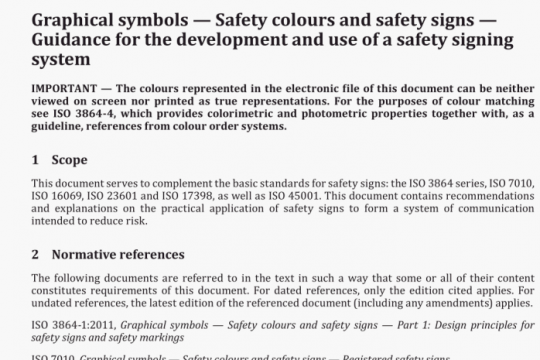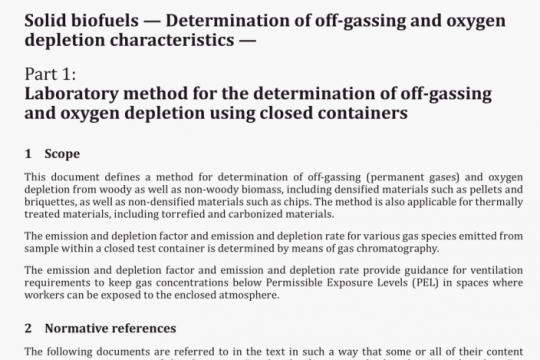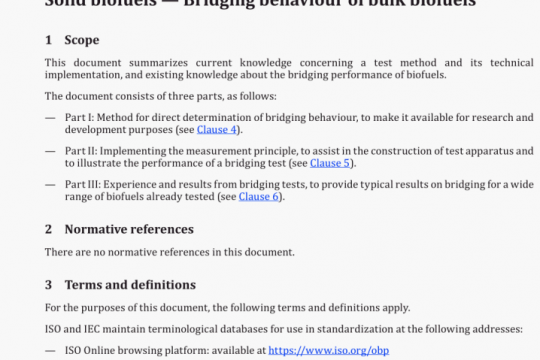ISO 23864 pdf free download
ISO 23864-2021 pdf free download.Non-destructive testing of welds – Ultrasonic testing一Use of automated total focusing technique (TFM) and related technologies.
This document specifies the application of the TFM technique and related technologies for semi- or fully automated ultrasonic testing of fusion- welded joints in metallic materials of minimum thickness 3.2 mm.
NOTE Unless stated otherwise, in this document TFM’ and TFM technique refer to the TFM technique as defined in ISO 23243. and to all related technologies, see for example ISO 23865 and ISO 23243.
This document is applicable to components with welds fabricated using metals which have isotropic (constant properties in all directions) and homogeneous conditions. This includes welds in low carbon alloy steels and common aerospace grade aluminium and titanium alloys, provided they are homogeneous and isotropic.
This document applies to full penetration welded joints of simple geometry in plates, pipes and vessels.
This document specifies four testing levels (A, B, C, D), each corresponding to a different probability of detection of imperfections. Guidance on the selection of testing levels is provided. Coarse-grained metals and austenitic welds can be tested when the provisions of this document have been taken into account.
This document gives provisions on the specific capabilities and limitations of the TFM technique for the detection, locating, sizing and characterization of discontinuities in fusion-welded joints. The TFM technique can be used as a stand-alone approach or in combination with other non-destructive testing (NDT) methods for manufacturing, in-service and post-repair tests.
This document includes assessment of indications for acceptance purposes based on either amplitude (equivalent reflector size) and length or height and length.
This document does not include acceptance levels for discontinuities.
The following two typical testing techniques for welded joints are referred to in this document:
a) side scanning, where the probe(s) is (are) positioned adjacent to the weld cap, typically using wedges. Side scanning can be performed from one side or both sides of the weld;
b) top scanning where the probe is positioned on top of weld cap with a flexible, conformable delay line or using immersion technique, or using contact technique after removing the weld cap.
Semi-automated testing encompasses a controlled movement of one or more probes along a fixture (guidance strip, ruler, etc.), whereby the probe position is measured with a position sensor. The scan is performed manually.
In addition, fully automated testing includes mechanized propulsion.
2 Normative references
The following documents are referred to in the text in such a way that some or all of their content constitutes requirements of this document. For dated references, only the edition cited applies. For undated references, the latest edition of the referenced document (including any amendments) applies.
ISO 5577, Non-destructive testing — Ultrasonic testing — Vocabulary
Iso 5817, Welding — Fusion-welded joints in steel, nickel, titanium and their alloys (beam welding excluded) — Quality levels for imperfections
ISO 9712, Non-destructive testing — Qualification and certification of NDT personnel
ISO 17635, Non-destructive testing of welds — General rules for metallic materials
ISO 18563-1, Non-destructive testing — Characterization and verification of ultrasonic phased array equipment — Part 1: Instruments
ISO 18563-2, Non-destructive testing — Characterization and verification of ultrasonic phased array equipment — Part 2: Probes
ISO 23865:202 1, Non-destructive testing — Ultrasonic testing — General use of full matrix capture! total focusing method technique
ISO 23243, Non-destructive testing — Ultrasonic testing with arrays – Vocabulary
3 Terms and definitions
For the purposes of this document, the terms and definitions given in ISO 5577, ISO 17635, ISO 23865 and ISO 23243 apply.
ISO and IEC maintain terminological databases for use in standardization at the following addresses:
— ISO Online browsing platform: available at http.//www.ioorgJobp
— IEC Electropedia: available at http://www.electropedia.org/
4 Testing levels
Quality requirements for welded joints are mainly associated with the material, the welding process and the service conditions. To accommodate all these requirements, this document specifies four testing levels (A, B, C, and D).
From testing level A to testing level C, an increasing probability of detection is achieved by an increasing testing coverage, i.e. covering the test volume in multiple ways, e.g. number of imaging paths, number of array positions.
Testing level D may be agreed for special applications using a written procedure which shall take into account the general requirements of this document. This includes tests of metals other than ferritic steel, tests on partial penetration welds, tests at object temperatures outside the range of Z7. For level D, a verification on test blocks is mandatory.
Testing levels related to quality levels shall be in accordance with ISO 5817 or technically equivalent standards. The appropriate testing level can be specified by standards for testing of welds (e.g. ISO 17635), by product standards or by other documents. When ISO 17635 is specified, the recommended testing levels are as given in Table 1.ISO 23864 pdf download.




